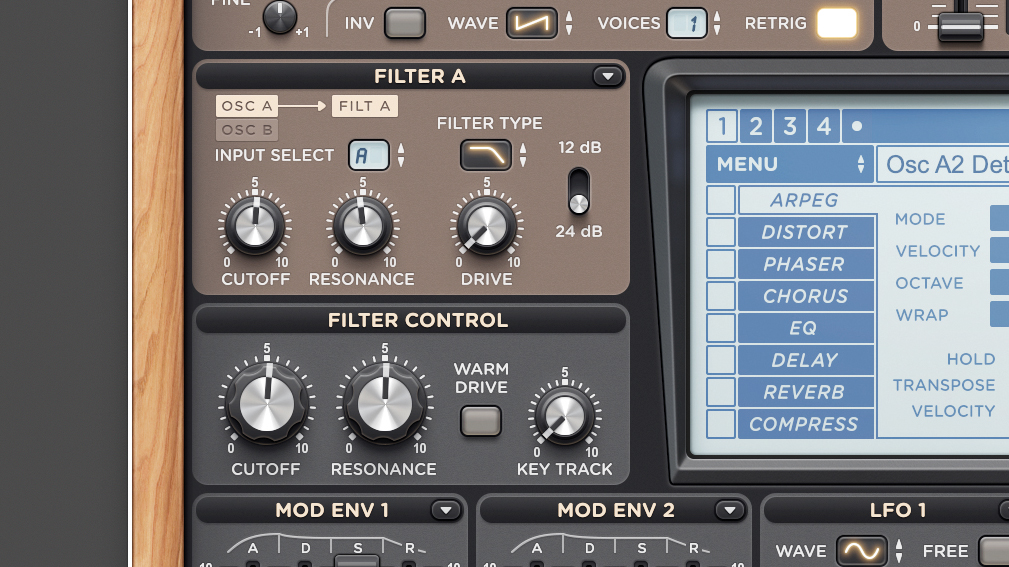How to make an acid bassline like Fatboy Slim's Everybody Needs A 303 (without using a 303)
First up in our guide to 15 essential synth sounds every producer should know: the most iconic bass sound in electronic music's history

Over the coming days, we'll be publishing a series of tutorials that cover the most essential, bread-and-butter synth patches in every aspiring synthesist's arsenal as part of our guide to the 15 synth patches every producer should know. First up: the acid bassline.
Acid house delivered a more edgy sound than more mainstream house of the time, and much of this was down to the squelchy filtered sound of the TB-303.
This compact monophonic bass module from Roland with its single sawtooth or square oscillator, onboard sequencer and cheap-looking silver fascia was a commercial failure.

However, a few years later it was rediscovered by dance producers who exploited its distinctive sound and hidden pattern randomiser to create pokey filtered repetitive bass and riff sounds. Early examples included A Guy Called Gerald’s Voodoo Ray and Sleezy D’s I’ve Lost Control. Meanwhile Fatboy Slim’s homage Everybody Needs A 303 remains a fantastic demo of the sound.
Understandably the sound is a popular synth preset available on many synths, but creating convincing parts also requires some sequencing features. Here we’ll start with the basics, creating the sound from scratch, and then building up to a complete part.

Creating a core acid bass sound is fairly straightforward, requiring a single oscillator subtractive synth. But your parts will be more convincing if you can combine them with a TB-303-style sequencer.
This will allow you to build slides and accents into your parts or even randomise the patterns, much like the original hardware. Here we’re using Lennar Sylenth1 which has an onboard sequencer with some of these features.
Want all the hottest music and gear news, reviews, deals, features and more, direct to your inbox? Sign up here.

For the core sound, start with an initialised patch and select a sawtooth oscillator. Now adjust the amplitude envelope to create some attack – we’ve set up ours with a fast attack, medium decay, shorter sustain and short release.
At this stage we can also select the playback mode as legato and add some portamento. We’ve set our portamento about halfway up, but you can fine-tune this according to your synth’s behaviour.

The filter settings are vital for a good acid sound and this includes real-time control of cutoff and resonance. Start with a steep low-pass filter (ours is 24dB/octave), adding some resonance and adjusting the cutoff. Ours are set about halfway, but we’ll adjust them later.
Now assign an envelope to both cutoff and resonance, setting a short decay and adjusting the amount to taste. You should now have a basic squelchy acid sound.

Now to add some movement to the sound make some filter-related assignments. First up, we want the velocity in our sequence (see next step) to have some impact, so we’ve assigned both the filter cutoff and resonance to the velocity.
We can also introduce another layer of control by assigning an LFO to filter cutoff. Using a random wave shape, free timing and minimal depth adds excellent but slightly unpredictable movement.

We can now focus on patterns. Using the onboard step sequencer mode we’re using a 2-bar 16 step pattern and have simply added a few octaves (+12 semitones) on some of the steps. Now by adjusting the velocity on each step and tweaking the filter settings made above we can add real-time changes to the filter cutoff.
Finally, by activating the Hold option on some steps we can add the distinctive TB-303 slide effect.

We can finesse the overall sound using some effects and if we use the onboard ones they’ll be saved with our patch. A good starting point with an acid part is some delay. Here we’re using a ping pong stereo delay with 1/4 and 1/8 notes, setting the feedback quite low.
Finally, acid parts often have further filtering that works with the overall ebb and flow of the track. Try automating the filter cutoff using your DAW.